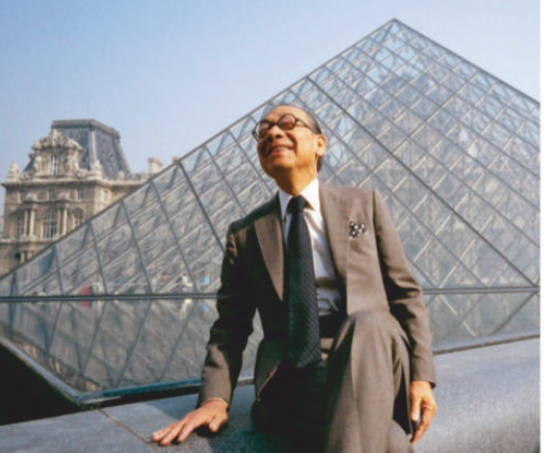Stone, too, was chosen to pick up the changing colours of daylight: creamy limestone, as at Doha, or the pale pink Tennessee marble he used for the East Building. But everyday concrete could also be refined to his purposes by matching its colour consistently to local earth, bush-hammering the NCAR slabs so that they resembled weathered rocks, and avoiding visible joins. One of his designs for William Zeckendorf, the flamboyant NewYork property developer who employed him in the 1950s, was the Kips Bay Plaza housing project, two square grids in precast concrete which were meant to revitalise a blighted neighbourhood.
石頭也被選來(lái)捕捉日光變幻的顏色:像在多哈應(yīng)用的奶油色石灰?guī)r,或者是他用來(lái)建造東方建筑的淡粉色田納西大理石。但是日常的混凝土也可以通過(guò)使其顏色與當(dāng)?shù)赝寥酪恢聛?lái)達(dá)到他的目的,國(guó)家大氣研究中心應(yīng)用的剁斧石做法,使石板看起來(lái)像風(fēng)化的巖石,并避免可見的連接。威廉·澤肯多夫是上世紀(jì)50年代聘用他的紐約房地產(chǎn)開發(fā)商,行事高調(diào)。 貝聿銘為威廉設(shè)計(jì)的一個(gè)作品是基普斯灣廣場(chǎng)的住宅項(xiàng)目,兩個(gè)由預(yù)制混凝土構(gòu)成的方形網(wǎng)格,旨在重振一個(gè)衰敗的街區(qū)。
He softened them with arched and recessed windows until they looked like honeycombs. Architecture could heal, too. Once Jackie Kennedy had daringly picked him to build her husband's library in 1964, he became such a feature of America's cultural scene, owlishly sipping his favourite red Bordeaux, that it was easy to forget that only the rise of the communists in China had kept him in America at all. He had come to study in 1934, lured mostly by the films of Bing Crosby and Betty Grable, and had fun. But he was keen to go back until it became too risky for a banker's son to do so.
他用拱形和凹形的窗戶使它們變得柔和,直到它們看起來(lái)像蜂巢。建筑也可以治愈創(chuàng)傷。1964年,杰奎琳·肯尼迪大膽地選擇貝聿銘來(lái)建造她丈夫的圖書館,他成為了美國(guó)文化的一個(gè)重要人物,獨(dú)自啜飲著他最喜歡的波爾多紅酒,人們很容易忘記,只有中國(guó)共產(chǎn)黨的崛起才讓他留在了美國(guó)。1934年,主要受賓·克羅斯比和貝蒂·格拉布爾的電影吸引,他來(lái)到這里學(xué)習(xí),過(guò)得很開心。 但他很想回去,直到一個(gè)銀行家的兒子這么做風(fēng)險(xiǎn)太大。

He therefore took American citizenship, but did not cut the roots. His wife was Chinese; his children had Chinese names. And his imagination had been shaped less by Le Corbusieror Walter Gropius, though he met and admired both men, than by his family's ancient gardens at Suzhou in Jiangsu. There, as a child, he would wander winding paths through fantastic rocks towards pavilions, unconsciously absorbing sightlines and approaches, light and shadow, as well as the framing of views. He did not forget.
因此他成了美國(guó)公民,但是并沒(méi)有切斷根源。他的老婆是中國(guó)人,他的孩子都有中國(guó)名字。他的想象力不是由勒·柯布西耶·沃爾特·格羅皮烏斯塑造的,盡管他認(rèn)識(shí)并欣賞這兩個(gè)人,而是由他的家族在江蘇蘇州的古老花園塑造的。在那里,當(dāng)他還是個(gè)孩子的時(shí)候,他會(huì)沿著蜿蜒曲折的小路穿過(guò)奇形怪狀的巖石,走向亭臺(tái)樓閣,無(wú)意識(shí)地吸收視線和方法,光和影,以及視圖的框架。他沒(méi)有忘記。
譯文由可可原創(chuàng),僅供學(xué)習(xí)交流使用,未經(jīng)許可請(qǐng)勿轉(zhuǎn)載。












